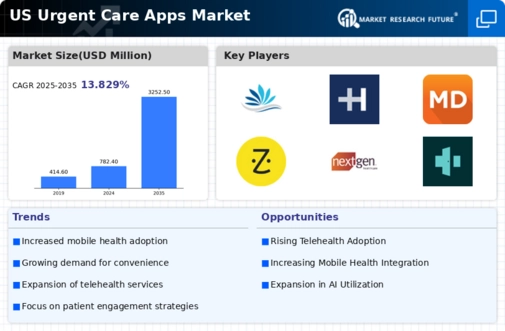The US Urgent Care Apps Market is characterized by rapid growth and increasing competition as healthcare continues its digital transformation. This market landscape involves various players focusing on enhancing accessibility to urgent care services through mobile applications.
With the ongoing emphasis on convenience, efficiency, and patient-centric solutions, companies are continuously innovating to capture a larger share of this burgeoning market. The competitive environment is shaped by technological advancements, regulatory frameworks, and changing consumer behaviors, compelling companies to differentiate their offerings while addressing the growing demand for telehealth services.
Strategic partnerships, product innovations, and customer engagement become pivotal as companies strive to expand their reach and improve service delivery in the urgent care industry.
American Well has established a strong market presence in the US Urgent Care Apps Market by offering innovative telehealth solutions that cater to the immediate healthcare needs of patients. The company leverages a user-friendly platform that facilitates seamless communication between patients and healthcare providers, ensuring timely access to medical care.
American Well's strengths lie in its robust technology infrastructure and wide-ranging partnerships with insurance companies and healthcare institutions, allowing it to offer affordable urgent care options to a diverse population. By emphasizing consumer experience and ease of use, American Well has effectively positioned itself as a leader in the urgent care app segment, demonstrating resilience and adaptability in a competitive landscape that is continuously evolving.
HealthTap has built a significant presence within the US Urgent Care Apps Market by providing a comprehensive suite of digital health services aimed at enhancing patient access to medical consultations. The company's key offerings include a mobile app that connects users to licensed healthcare professionals for urgent care consultations, thereby streamlining the healthcare experience.
HealthTap's strengths are underscored by its extensive database of medical knowledge and a network of experienced physicians, enabling it to offer personalized healthcare solutions. The company has engaged in strategic partnerships and potential mergers to broaden its capabilities and expand service delivery across various demographics within the US. This proactive approach positions HealthTap as a formidable player in the urgent care app market, continually refining its service offerings to meet the evolving needs of patients.




















